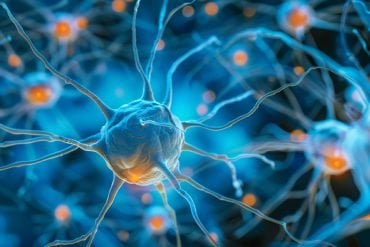Summary: People’s social networks significantly predict a song’s future popularity, increasing machine learning prediction accuracy by 50%. Analyzing data from last.fm, researchers found that friendships and listening habits are crucial in determining a song’s success.
This study highlights the importance of social connections in music trends, suggesting that who listens to what influences a song’s hit potential. The findings could revolutionize hit song prediction models by integrating social network data.
Key Facts:
- Social networks boost song hit prediction accuracy by 50%.
- Study analyzed 2.7 million users, 10 million songs, and 300 million plays on last.fm.
- Friendships and user influence are critical factors in a song’s spread and popularity.
Source: Complexity Science Hub
Ever wondered how your friends shape your music taste? In a recent study, researchers at the Complexity Science Hub (CSH) demonstrated that social networks are a powerful predictor of a song’s future popularity.
By analyzing friendships and listening habits, they’ve boosted machine learning prediction precision by 50%.
“Our findings suggest that the social element is as crucial in music spread as the artist’s fame or genre influence,” says Niklas Reisz from CSH.

By using information about listener social networks, along with common measures used in hit song prediction, such as how well-known the artist is and how popular the genre is, the researchers improved the precision of predicting hit songs from 14% to 21%.
The study, published in Scientific Reports, underscores the power of social connections in music trends.
A deep dive into data
The CSH team analyzed data from the music platform last.fm, analyzing 2.7 million users, 10 million songs, and 300 million plays. With users able to friend each other and share music preferences, the researchers gained anonymized insights into who listens to what and who influences whom, according to Reisz.
For their model, the researchers worked with two networks: one mapping friendships and another capturing influence dynamics — who listens to a song and who follows suit.
“Here, the nodes of the network are also people, but the connections arise when one person listens to a song and shortly afterwards another person listens to the same song for the first time,” explains Stefan Thurner from CSH.
Examining the first 200 plays of a new song, they predicted its chances of becoming a hit — defined as being in the top 1% most played songs on last.fm.
User influence
The study found that a song’s spread hinges on user influence within their social network. Individuals with a strong influence and large, interconnected friend circles accelerate a song’s popularity. According to the study, information about social networks and the dynamics of social influence enable much more precise predictions as to whether a song will be a hit or not.
“Our results also show how influence flows both ways — people who influence their friends are also influenced by them” explains CSH researcher Vito Servedio.
“In this way, multi-level cascades can develop within a very short time, in which a song can quickly reach many other people, starting with just a few people.”
Social power in the music industry
Predicting hit songs is crucial for the music industry, offering a competitive edge. Existing models often focus on artist fame and listening metrics, but the CSH study highlights the overlooked social aspect — musical homophily, which is the tendency for friends to listen to similar music.
“It was particularly interesting for us to see that the social aspect, musical homophily, has so far received very little attention — even though music has always had a strong social aspect,” says Reisz.
The study quantifies this social influence, providing insights that extend beyond music to areas like political opinion and climate change attitudes, according to Thurner.
About this social neuroscience and music research news
Author: Eliza Muto
Source: Complexity Science Hub
Contact: Eliza Muto – Complexity Science Hub
Image: The image is credited to Neuroscience News
Original Research: Open access.
“Quantifying the impact of homophily and influencer networks on song popularity prediction” by Niklas Reisz et al. Scientific Reports
Abstract
Quantifying the impact of homophily and influencer networks on song popularity prediction
Forecasting the popularity of new songs has become a standard practice in the music industry and provides a comparative advantage for those that do it well. Considerable efforts were put into machine learning prediction models for that purpose.
It is known that in these models, relevant predictive parameters include intrinsic lyrical and acoustic characteristics, extrinsic factors (e.g., publisher influence and support), and the previous popularity of the artists.
Much less attention was given to the social components of the spreading of song popularity. Recently, evidence for musical homophily—the tendency that people who are socially linked also share musical tastes—was reported.
Here we determine how musical homophily can be used to predict song popularity. The study is based on an extensive dataset from the last.fm online music platform from which we can extract social links between listeners and their listening patterns.
To quantify the importance of networks in the spreading of songs that eventually determines their popularity, we use musical homophily to design a predictive influence parameter and show that its inclusion in state-of-the-art machine learning models enhances predictions of song popularity.
The influence parameter improves the prediction precision (TP/(TP + FP)) by about 50% from 0.14 to 0.21, indicating that the social component in the spreading of music plays at least as significant a role as the artist’s popularity or the impact of the genre.






